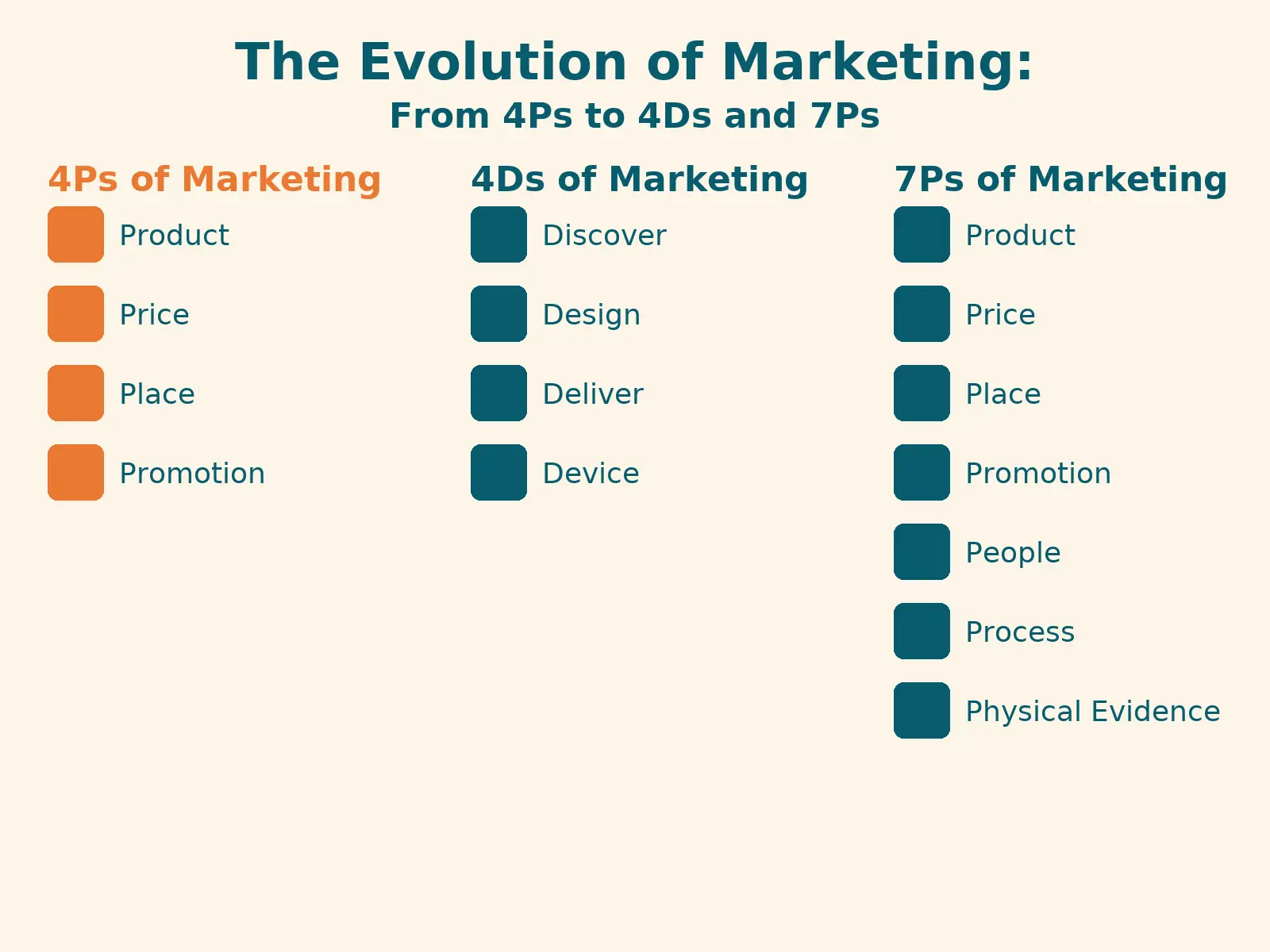Marketing has never been static—it evolves with technology, consumer behavior, and the way businesses interact with their audiences. Traditionally, the 4Ps of marketing formed the foundation for business strategy. Over time, this expanded into the 7Ps, especially with the rise of services and digital transformation. More recently, the concept of the 4Ds of digital marketing has emerged, reflecting how customer engagement has shifted in the digital age.
Let’s explore this evolution and why it matters for businesses today.
The Classic 4Ps of Marketing
First introduced by E. Jerome McCarthy in the 1960s, the 4Ps became the cornerstone of marketing education and practice:
- Product – What you are selling (goods or services).
- Price – How much customers are willing to pay and the strategy behind it.
- Place – Where and how the product is distributed.
- Promotion – How you communicate the product’s value to the market.
These four elements provided a framework for building strategies to reach customers effectively. However, as industries grew more service-driven, marketers needed to expand the model.
The Expansion to 7Ps of Marketing
The original 4Ps were product-oriented. But with the service economy booming in the 1980s and 1990s, marketers recognized the need to capture intangible elements. The 7Ps of marketing were introduced, adding three more dimensions:
- People – Staff, service providers, and everyone who interacts with customers.
- Process – The systems and workflows that deliver consistent customer experiences.
- Physical Evidence – Tangible cues (like packaging, design, or even a website’s look) that reinforce credibility.
This shift made the marketing mix more holistic, addressing not just what businesses offered, but how they delivered value and built trust.
The Digital Shift: 4Ds of Marketing
As digital transformation took hold, a new model surfaced—the 4Ds of digital marketing. Unlike the 4Ps and 7Ps, which are internally focused on what businesses do, the 4Ds are customer-centric and highlight how brands engage in the digital space:
- Discover – How customers find you (SEO, ads, social media, search engines).
- Design – Crafting seamless user experiences across websites, apps, and platforms.
- Deliver – Meeting customers where they are with personalized, timely messages.
- Device – Optimizing engagement across mobile, desktop, tablets, and emerging tech.
The 4Ds reflect the reality that today’s marketing is multichannel, interactive, and technology-driven. Success depends not only on your product and promotion but also on how customers discover, experience, and interact with your brand online.
From 4Ps to 4Ds and 7Ps: Why It Matters
- The 4Ps taught businesses how to structure their offerings.
- The 7Ps helped them adapt to service-driven markets and customer experience demands.
- The 4Ds emphasize digital transformation, ensuring brands remain relevant in an online, mobile-first world.
Together, these models highlight one truth: marketing evolves with people. Customers expect seamless, personalized experiences across channels, and businesses that integrate these frameworks are better positioned for long-term success.
Final Thoughts
The journey from 4Ps to 7Ps to 4Ds shows how marketing has shifted from being product-focused to service-driven and finally to digital-first and customer-centric. For modern businesses, it’s not about choosing one model over another, but about blending them to fit the realities of your industry, audience, and technology landscape.
At TonyCWK.com, I believe marketers who embrace this evolution—balancing timeless fundamentals with digital agility—will lead the way in 2025 and beyond.


Leave a Reply